Homepage Slideshow
Dubbed “Winter Escapade – It’s More Fun In The Philippines (WE-IMFITP) InvestFair 2014,” it was held at the Royal Garden Convention Hall in January last year where participants went around Western Visayas to look for business opportunities.
Yong also heads Symphony 8 which operates the Philippine-Canadian Inquirer, Canada’s first and only nationwide Filipino-Canadian newspaper.
But aside from falling in love with Iloilo, reason why he chose to open a business here, Yong also fell in love with Iloilo’s indigenous textile known as hablon and has since promoted it in Canada.

In November 2015, Yong invited Iloilo’s foremost fashion designer andhablon advocate Jaki Peñalosa to showcase her exceptional works at the PHILIPPINEfest held at the Aberdeen Centre and Symphony Hill in British Columbia.
In June 2016, Peñalosa will tour the cities of Vancouver, Toronto, and Ottawa for a month to again showcase hablon in a series of shows that Yong and the Philippine Embassy there are organizing.
“This is rare opportunity for us to promote our local fabric that has already become part of our heritage,” says Peñalosa.
In her designs, Peñalosa uses hablon, a uniquely Iloilo fabric that was the chief import of the province during the pre-Hispanic period and in the early days of Spanish colonization.
In fact, Iloilo was once known as the “Textile Center of the Philippines” because it produces huge volumes of hablon, employing most of its women.
Peñalosa has become synonymous to hablon, spearheading a crusade to revive the industry that met its demise with the introduction of more affordable European textile in the Philippines and the shift to sugar production.
A scion of the culturally-inclined family in Iloilo, she has broughthablon out of obscurity by bringing it to international catwalks, like the U.S., Norway, and France.
The partnership between Peñalosa and Yong is one of the tangible results of the Investment Fair 2014 which was highlighted by an investment forum following a week-long economic tour of the region. It was during fashion show segment of the Fair that new foreign partners such as Alan Yong first noticed Peñalosa’s creations.
LGSP-LED, organizer of the Fair, is a program of the Department of Interior and Local Government (DILG) with funding from the Government of Canada, through the Department of Foreign Affairs, Trade, and Development (DFATD).
Peñalosa credits LGSP-LED “for facilitating not only inbound investments but also for opening doors for the international market,” paving the way for a local businesswoman.
“My dream is to put up a shop in every major city in the world,” she added, carrying hablon with her to be known to the world as the Philippine fiber. Hopefully, with the promotion of hablon by fashion designers like Jaki Peñalosa and by foreign investors like Alan Yong, a lot of women can be productive again and poverty in the Philippines can be alleviated.#
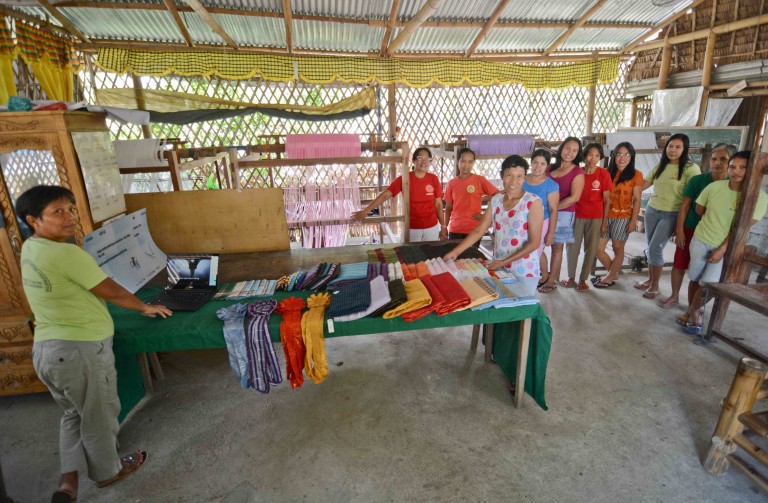
Local women weavers of hablon in Iloilo, Philippines.
During the Spanish period, the hablon industry was concentrated in the municipalities of Jaro, Molo, Arevalo and Mandurriao, and in the towns of Miag-ao, Tigbauan, Oton, Santa Barbara and Janiuay.
Gender advocates have been pushing for the revival of the hablon industry, which declined as a result of the rise of sugar production, because it offered employment to women.
“Hablon weaving is a women-led trade,” noted the report. “Weaving Progress for the Miag-ao Hablon Industry: Gender-Responsive Value Chain Analysis of Hablon Weavers in Miag-ao, Iloilo.”
“Skilled female labor is widely available in the locality since loom weaving skills are passed on through generations. Girls are usually brought to the production center, and taught by older weavers to do loom weaving,” it added.
The report was produced by the Philippine Commission on Women (PCW) with fund-assistance from the Global Affairs Canada (formerly Canadian International Development Agency).
Today, hablon products range from barongs, gowns and shawls, to bags, belts, pillow cases, lamp sheets, table runners, placemats, pencil cases, pouches, and similar accessories. They are marketed locally, and can be found in product outlets, boutiques and fashion shops, department stores, showrooms and flea markets or tiangge.
“Made-to-order hablon cloth is preferred by most corporate buyers such as airline companies, schools and government offices for their office uniforms,” the report said. Local customers, on the other hand, are frequent buyers of hablon table cloth and runners, pillows, bags, and pouches with unique designs.
In Miagao where there is a cooperative of hablon weavers, producers can now command higher market prices by they have attracted high-end customers such as local and international fashion designers and boutiques.
When sugar became Iloilo’s chief export in the 1880s after as result of the opening of Iloilo port to world trade, many women became jobless because the weaving industry lost its primary importance. During the early years of American colonization, local leaders have called for the “protection” of hablon by limiting importation of textile although concerns were also raised as to the local fabric’s inferior quality.
Echoing these sentiments, then Iloilo Governor Raymundo Melliza, in a report dated July 5, 1905, called for the abolition of taxes on raw materials used in weaving and promote their cultivation. The PCW report said that the net profit from hablon making for cooperatives is estimated at 35 percent since it only requires labor, materials and minimal overhead, and administrative and marketing costs.
“Usually, a loom weaver can finish three to five meters a day, working for four to five days a week. They are paid at an average of P 45/per meter for weaving and P3 per meter for warping,” it said. “Total cost of hablon cloth is P114.15 per meter, which can be sold commercially at P250 to P350 per meter, depending on the quality of materials used,” it added.
Events
-
Workshop on Workforce Development
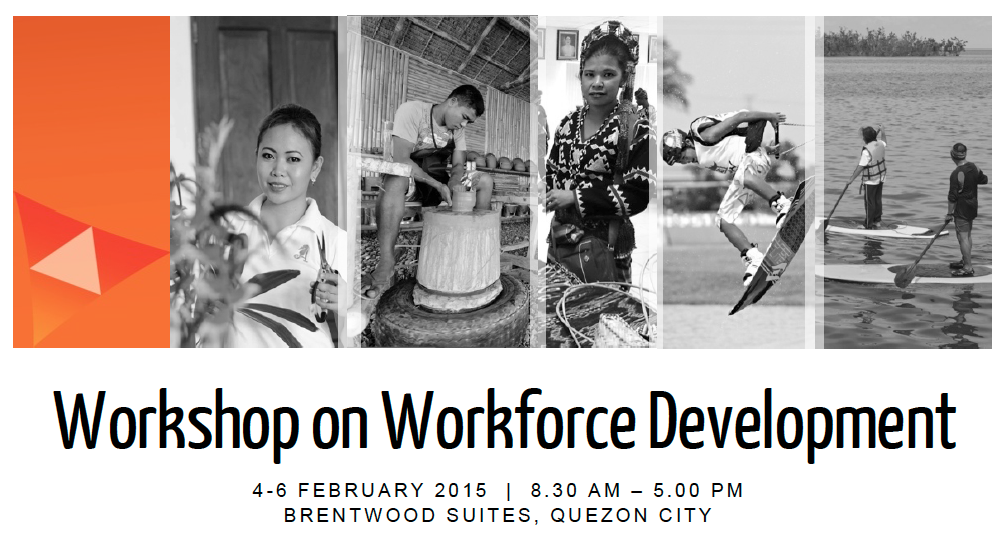
The Department of the Interior and Local Government (DILG) continues to support local governments as front liners of inclusive growth by advocating for LGUs to become more business-friendly and competitive.
Part of this process is ensuring the local supply of workforce meets—in number and competencies—the demand of priority industries and emerging investors, leading ultimately to more jobs for a larger number of Filipinos.
In January 2015, through its Canada-backed program, the Local Governance Support Program for Local Economic Development (LGSP-LED), DILG helped eleven (11) provinces complete nine (9) tourism circuit plans within the priority Tourism Development Areas identified by the national government.
-
Coaching on BFCL for LEIPOs
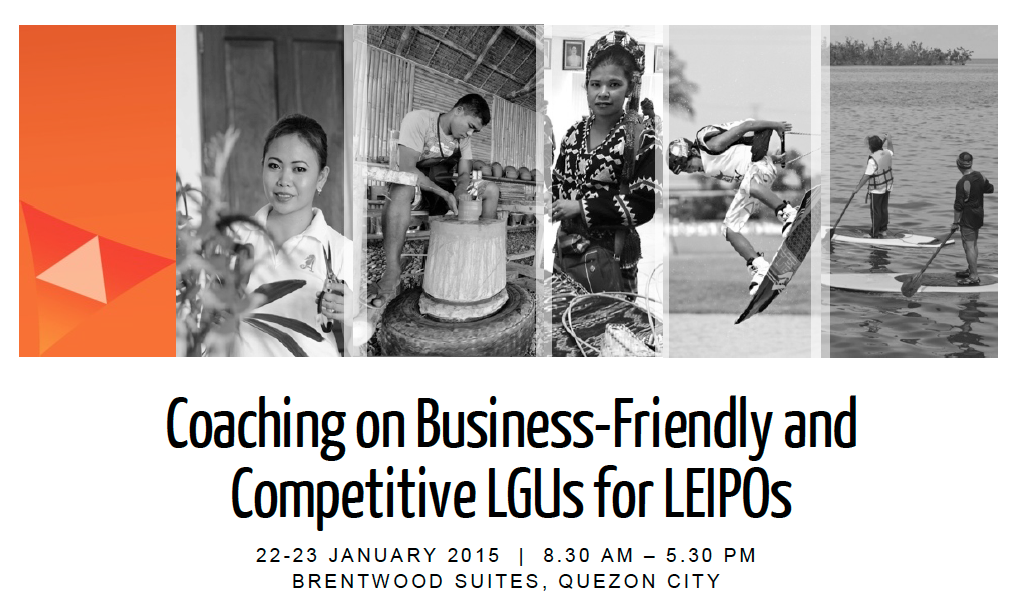
The Department of the Interior and Local Government (DILG) continues to intensify its support for local governments to be front liners of inclusive growth by advocating for LGUs to become more business-friendly and competitive.Through its Canada-backed program, the Local Governance Support Program for Local Economic Development (LGSP-LED), DILG is conducting a coaching session for Local Economic and Investment Promotion Officers (LEIPOs) from 18 provinces: Palawan; Albay; Sorsogon; Aklan; Antique; Iloilo; Negros Occidental; Negros Oriental; Siquijor; Cebu; Davao del Norte; Pangasinan; Guimaras; Bohol; Zamboanga del Norte; Leyte; South Cotabato; and, Sultan Kudarat.
-
Building Competitive LGUs

High unemployment rates can be attributed to a mismatch in the worker competencies that institutions produce as compared to the needs of a particular industry. This proves to be true in the experience of the Department of the Interior and Local Government (DILG) through its Local Governance Support Program for Local Economic Development (LGSP-LED).
Success Stories
-
Tourism helps rebuild Northern Iloilo
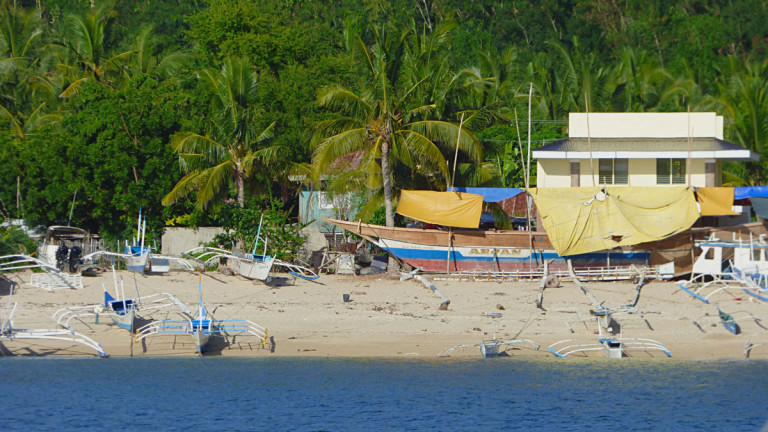
Isla Gigantes is the farthest island off the northern coast of the province of Iloilo, Philippines. It is one of the 33 islands in the islands in the Municipality of Carles where 97% of barangays (villages) are coastal. There are about a thousand households settled here with fishing as their primary source of livelihood. Out of the 33 islands in the municipality, Isla Gigantes might be the one most visited by tourists.
This was not always the case. Isla Gigantes only gained popularity after it suffered through supertyphoon Yolanda in November 2013.
“Dinala ako ng hangin papunta sa dagat,” recalls Elmar Tuma-on, a 42-year-old local resident. I was swept away, towards the shore.
-
Coop helps Boholano farmers keep up with organic rice demands
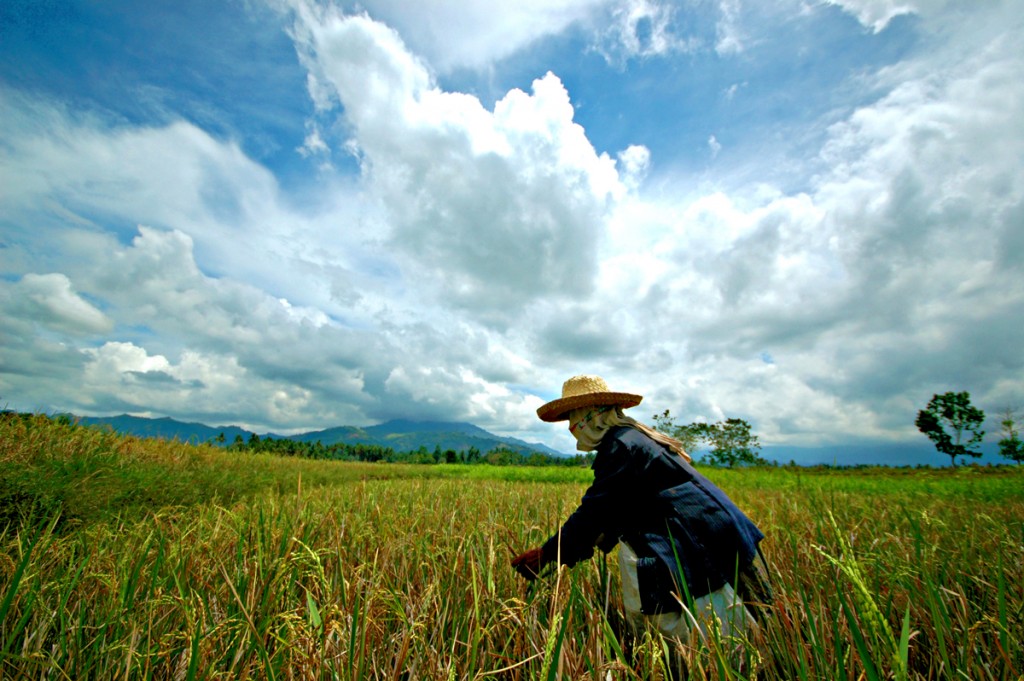
Rice Harvest in the Philippines
Agriculture is the main livelihood in the Province of Bohol – an island in the heart of the Philippines.
During the Green Revolution in the 1960s, government support to increase agricultural production in the Philippines was plentiful and forceful. With this support and the introduction of new varieties and technology, farmers were able to double agricultural yields. It was in this context that the Philippines became a rice-exporting country.
-
Hablon Goes Global

SOLAR LIVING, a Canadian company that promotes solar energy for both residential and commercial use, opened its showroom at SM City Iloilo on December 18, 2015.
Owned by Malaysian-Canadian businessman Alan Yong, Solar Living is the first to respond to a 2014 business matching activity organized by the Local Governance Support Program for Local Economic Development (LGSP-LED).






